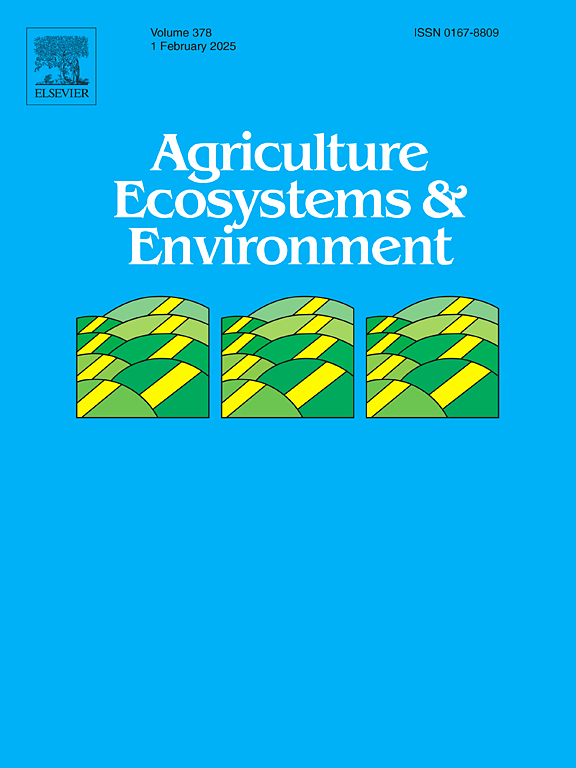Tropical forest restoration promotes soil phosphorus bioavailability in SW China: Processes and predictors
IF 6
1区 农林科学
Q1 AGRICULTURE, MULTIDISCIPLINARY
引用次数: 0
Abstract
The conversion of primary forests into monoculture plantations is a widespread phenomenon in the tropics, while the restoration of abandoned agricultural lands has gained considerable attention in recent years. Phosphorus (P) is an essential nutrient with very low availability from the soil, constraining the productivity and functioning of tropical ecosystems. However, the impacts of forest restoration on soil P cycling and the underlying mechanisms remain unclear. In Southwestern China, we investigated the plant community characteristics, soil P cycling dynamics, and soil physicochemical properties under different land uses (including monoculture plantations, farmland-regenerated secondary forests, rubber plantation-regenerated secondary forests, and primary rainforests), and identified the predictors of soil available P. We found that the conversion of primary rainforests into monoculture plantations not only substantially decreased tree diversity but also modified soil P cycling (such as total, available, microbial P and phosphatase activity). In contrast, the regeneration of secondary forests (from both farmlands and rubber plantations) significantly enhanced tree diversity and improved soil physicochemical conditions compared to monoculture plantations, thereby promoting soil P bioavailability through increased soil organic carbon, microbial P and phosphatase activity. Soil organic carbon, microbial biomass P and fine root were the main predictors of soil available P, for both annual and seasonal timeframes. Notably, the soil C:P ratio exhibited a more pronounced impact on soil available P during the dry season, while acid phosphatase exerted greater influence during the rainy season. Furthermore, the presence of fine roots and leguminous trees significantly and positively influenced soil P cycling, particularly in the surface soil layers. Thus, these results suggest that establishing legumes-rich, diverse communities and ensuring organic inputs is beneficial for sustaining soil P resources in tropical areas. This work offers important guidance for policy-makers to navigate the trade-offs between conservation and production goals in land development.
求助全文
约1分钟内获得全文
求助全文
来源期刊

Agriculture, Ecosystems & Environment
环境科学-环境科学
CiteScore
11.70
自引率
9.10%
发文量
392
审稿时长
26 days
期刊介绍:
Agriculture, Ecosystems and Environment publishes scientific articles dealing with the interface between agroecosystems and the natural environment, specifically how agriculture influences the environment and how changes in that environment impact agroecosystems. Preference is given to papers from experimental and observational research at the field, system or landscape level, from studies that enhance our understanding of processes using data-based biophysical modelling, and papers that bridge scientific disciplines and integrate knowledge. All papers should be placed in an international or wide comparative context.
 求助内容:
求助内容: 应助结果提醒方式:
应助结果提醒方式:


